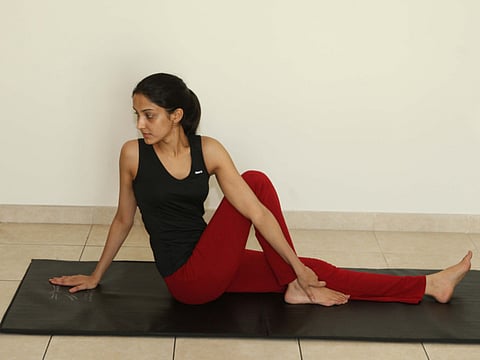Yoga for overcoming lethargy
Bharat Thakur guides you through the practices of this ancient Indian discipline

Lethargy is characterised by feelings of sluggishness, drowsiness, moodiness, fatigue, lack of energy and decreased alertness. The underlying cause for this may be physical such as thyroid disorders, dehydration, poor nutrition, sleep disorders, stress, overexertion, depression etc.
To overcome lethargy, we need to bring some changes in our lifestyle which includes eating nutritious food, taking proper sleep and exercising regularly. Yoga is one of the best ways to reset your energies and gain back health and vitality.
Importance of physical activity
Often mental lethargy demotivates a person to be physically active and we start finding excuses to skip our daily walks or workout sessions. Yoga postures work on multiple levels including the organs and endocrine glands of the body, thus maintaining robust endocrine levels. They elevate your mood and relax your body by naturally influencing neurotransmitters (chemical messengers in the brain such as serotonin, endorphins, dopamine etc).
The body and the mind harbour tensions or knots. Every mental knot has a corresponding physical, muscular knot and vice versa. The aim of an asana (posture) is to release these knots. Asanas release mental tensions by dealing with them on the physical level. Combined with pranayama, meditation and yoga nidra (yogic sleep), these asanas are most effective in eliminating the knots — both at the mental and physical levels.
As a result, the dormant energy is released from the body and vitality and strength take its place. The mind becomes light, creative, joyful and balanced as alertness of the brain brings clarity to thoughts, decisions, mental focus and energies. Through regular practice, one can break the unhealthy patterns or habits in the body which lead to lethargy.
Pranayama for revitalisation
Stress and irregularities in lifestyle and dietary indiscretions deplete and obstruct the pranic (energy) flow. Physical activities such as exercise, work, sleep, intake of food and intimate relations, all affect the distribution and flow of prana (life force) in the body. So does emotion, thought and imagination. This results in what people experience as being “drained of energy”.
Techniques of pranayama reverse this process by energising and balancing the prana.
Pranayama practices should be performed after the asanas.
Kapalbhati Pranayama (Frontal Brain Cleansing Breath)
Rapidly exhale through the nose. Inhalation remains passive. Practise for one to five minutes exhaling as many times as possible per minute.
Kapalbhati purifies the pranic system and removes sensory distractions from the mind. It is used to energise the mind for mental work, to reduce drowsiness and prepare the mind for meditation.
Surya Bheda Pranayama (Vitality Stimulating Breath)
Close the left nostril with the ring finger and inhale slowly and deeply through the right nostril. At the end of inhalation close both nostrils and retain the breath for 5-10 seconds. Exhale slowly through the right nostril by keeping the left nostril closed with the ring finger. This is one round. Practise at least 10-12 rounds.
Practice of the week
Begin with 15-20 sun salutations followed by the postures listed below:
Utkatasana
Veerabhadrasana
Ardha Chandrasana
Sarpasana
Dhanurasana
Paschimmotanasana
Ardha Matsyendrasana
Kapalbhati
Surya Bhedan
Next week: Yoga to manage hyperacidity
— This is an interactive series, in which we will bring you practical tips
on daily living, inspired by the vision of yoga. Write in to tabloid@gulfnews.com with your questions and doubts regarding enhancing your lifestyle through yoga. For more information, call 800-YOGA (9642) or log on to artisticyoga.com
Sign up for the Daily Briefing
Get the latest news and updates straight to your inbox



